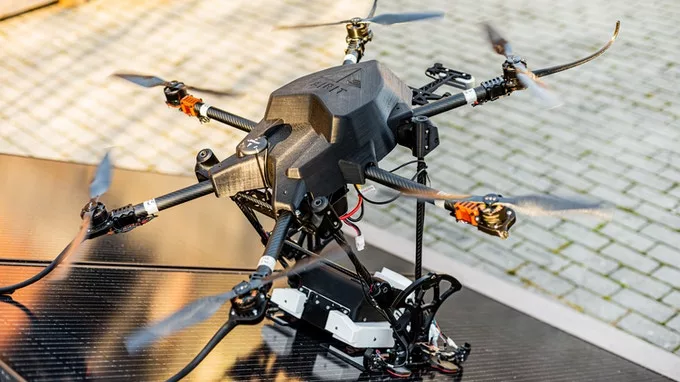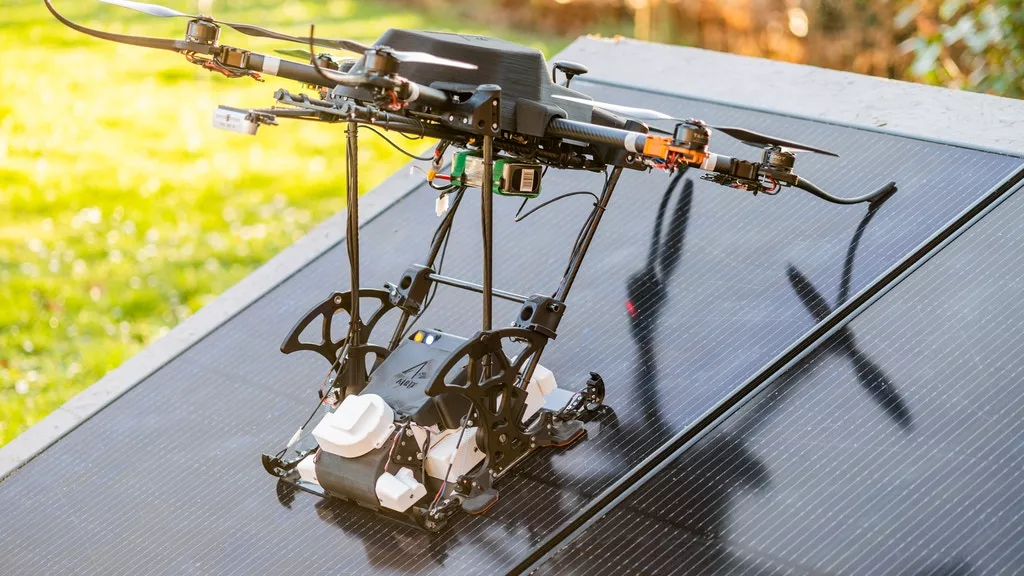In order to keep running at peak efficiency, solar panels regularly have to be cleaned of accumulated dust and other debris. Such panels can often be difficult to reach, though, which is why the Helios system uses not one but two drones to get the job done.
First of all, we have already heard of proposed setups that utilize aerial drones to spray soapy water onto dirty panels. Unfortunately, those drones would use their batteries up quite quickly. Additionally, by not making direct contact with the panels, they likely wouldn't get all the dirt off.
Developed by Belgian startup ART Robotics, Helios addresses these problems by incorporating both a flying hexacopter and a panel-crawling rubber-tracked robot. The system is designed for use by Helios business operators, who would be called out to service small residential rooftop installations.
Initially, the copter would take off and fly up to the roof, carrying the robot with it on a tilting bottom-slung platform. Using a computer vision system, it would then spot the photovoltaic array, touch down on it, and allow the robot to roll off of its platform and onto the panels.

The copter would subsequently head back to its takeoff point and perform a landing, while the robot would set about moving back and forth across the panels, working its way from one side to the other. It wouldn't have any problem crossing between adjacent panels, and would clean them using a rotating brush and a vacuum.
Once the robot was finished, it would send a wireless signal to the copter. It would proceed to fly back to the roof, pick up the robot, then bring it back to the ground. All aspects of the entire panel-cleaning process would be performed autonomously, although the operator would remain onsite to supervise, and to take manual control if necessary.
According to ART Robotics, the system already exists in fully-functional prototype form. The developers have now turned to Kickstarter, in order to finance commercial development. Instead of offering the actual drones, they are instead offering panel-cleaning packages to Belgium-based backers, to be redeemed when and if the system is available. Pledges start at €120 (about US$133) for a package that covers up to 20 panels – the planned commercial price for that one is €150 (US$166).
The following animation illustrates how the Helios system will work.
Sources: Kickstarter, ART Robotics







